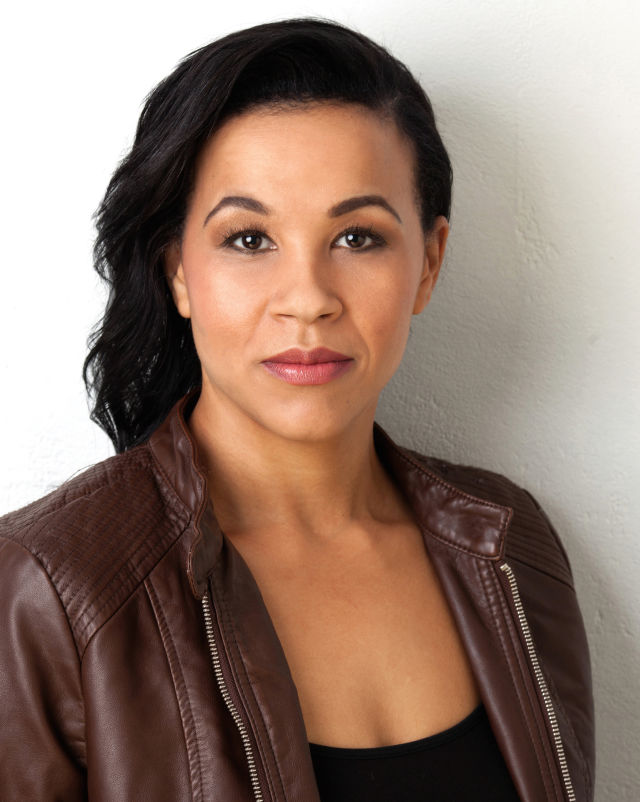A New Portland Performance Transforms Trauma Into Art

Image: Gracia Lam
When Anya Pearson was 15 years old she was raped by two of her boyfriend’s friends while he watched. She spent the night vomiting profusely, missed a week of school, and insisted to herself and others that the reason she couldn’t leave the house, couldn’t see friends, couldn’t even walk, was food poisoning. When she reconnected with her ex-boyfriend three years later, it triggered a series of memory flashes that made her body turn cold. It shook her apart. Now, 16 years on, she has turned that trauma into a searing creative work, laying it out on a Portland stage in a world-premiere production that heralds a bold new voice in this city’s theater—and claims a vital space for survivors in art.
Pearson’s Made to Dance in Burning Buildings opens at Shaking the Tree on February 15, a vivid choreopoem that combines biting and lyrical spoken word with visceral, almost brutal contemporary dance. It’s the story of a young girl, raped by her boyfriend’s friends, who fractures into five women representing different facets of her personality to cope with posttraumatic stress. These five characters—Lady of This Crippling Despair, Lady of Intoxicating Romance, Official Lady of Missing You, Lady of This Uncertain Madness, and Lady of Utmost Perseverance—bring her on a journey to integration through rhythmic and cerebral poetry, while her corporeal experience plays out simultaneously in movement, center stage.
“Art saved my life,” says Pearson. She’s talking, specifically, of reading at the age of 17 feminist playwright and poet Ntozake Shange’s for colored girls who have considered suicide/when the rainbow is enuf, a seminal 1976 work that broke new artistic ground and forefronts the experiences of women of color. “That helped me to get through because I knew that at some point I was going to find a strength, once I got to the other side, to use my words to inspire the next girl the way Shange inspired me.”
Made to Dance in Burning Buildings pays homage to her literary hero both in structure—Shange even coined the term choreopoem to describe for colored girls—and in linguistic echoes through the piece, but Pearson’s voice is fiercely her own.
Made to Dance in Burning Buildings may not be an easy show to watch—with a brutal subject at its center and the abstraction of a fragmented psyche as scaffolding—but it is important not only for its story but in its shrewd and creative approach to telling it. Pearson is deeply connected to her own subjectivity, but she also speaks to and for survivors, connecting her suffering with generations of women and raising her voice to make others heard.

Playwright and actor Anya Pearson
Image: Courtesy David Hiller
The performance piece actually began as poetry she wrote as a teenager to process her experience. As an undergrad at Marylhurst University she decided to bring it to life in theatrical form. She launched an Indiegogo campaign to that effect in 2013, and eventually landed the inaugural Voice is a Muscle grant for the project in 2016, valued at $10,000, from local writer Lidia Yuknavitch’s Corporeal Voices Foundation.
A workshop performance at Portland Playhouse with director Jamie M. Rea followed in February 2017. Shaking the Tree’s Samantha Van Der Merwe was there. “I got enough of a feel of the play to [get] really excited and impacted by it,” she recalls. “This character, the hero of the story ... shows us so many different aspects of what it means to go through trauma and bring yourself back together, there’s a lot you can recognize. It’s not presented realistically but I think it will be a very accessible way into the difficult material.”
Within months of that workshop, the #MeToo movement—which began 10 years previously with Tarana Burke specifically to highlight experiences of women of color—went viral. Suddenly, Made to Dance in Burning Buildings was glaringly topical.
Earlier this year, the work received a showcase production in the intimate confines of Joe’s Pub, in New York’s NoHo district. “It tremendously exceeded my expectations,” says Portland actor and activist Jane Vogel, who flew out for the performance. “Words fall short. It was a very electrifying experience. Anya has tapped into something that’s going to move us forward.”
She wasn’t the only one moved by the piece, which got a rave review on the popular OnStage blog. But Pearson says the most important reaction was one she got from a survivor who approached her after the show. “This is everything to me, thank you,” she told the creator. “I did it for you,” Pearson replied.
Has it helped her too? “It helps me to make sense out of my suffering,” she says with some care. “If I wasn’t being creative and I wasn’t using art to help others, I don’t know if I would be alive.”
Onstage, the slap of flesh as dancers hit the floor, rise, and pull each other through movement is a percussive counterpoint to the cadence of the characters’ spoken words. The lines are delivered at times in madness or despair but form a powerful, uplifting chorus. “I walk with women who have bled and wept for generations,” intones the Lady of Utmost Perseverance, played by Pearson herself in the Shaking the Tree production. “Setting down some of their burden by uttering sound / My voice long stifled, will ring out in triumphant splendor.”
Made to Dance in Burning Buildings
Feb 15–Mar 15, Shaking the Tree




